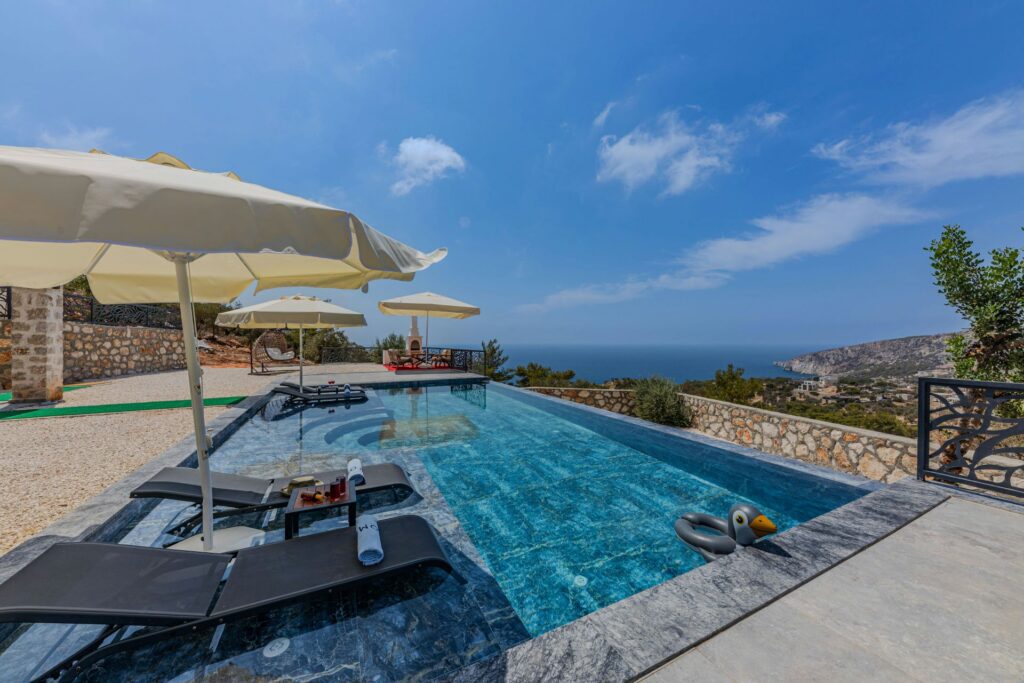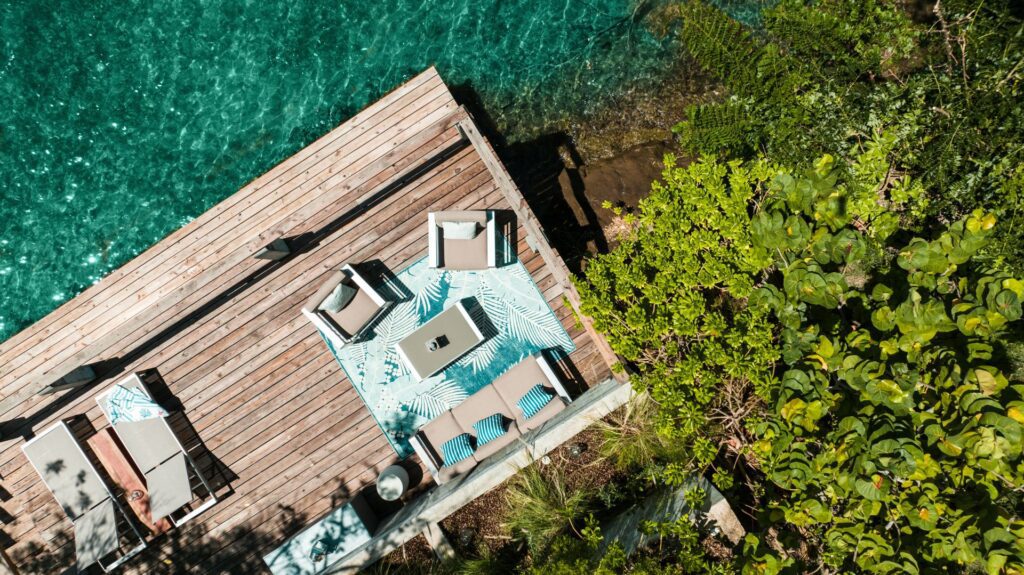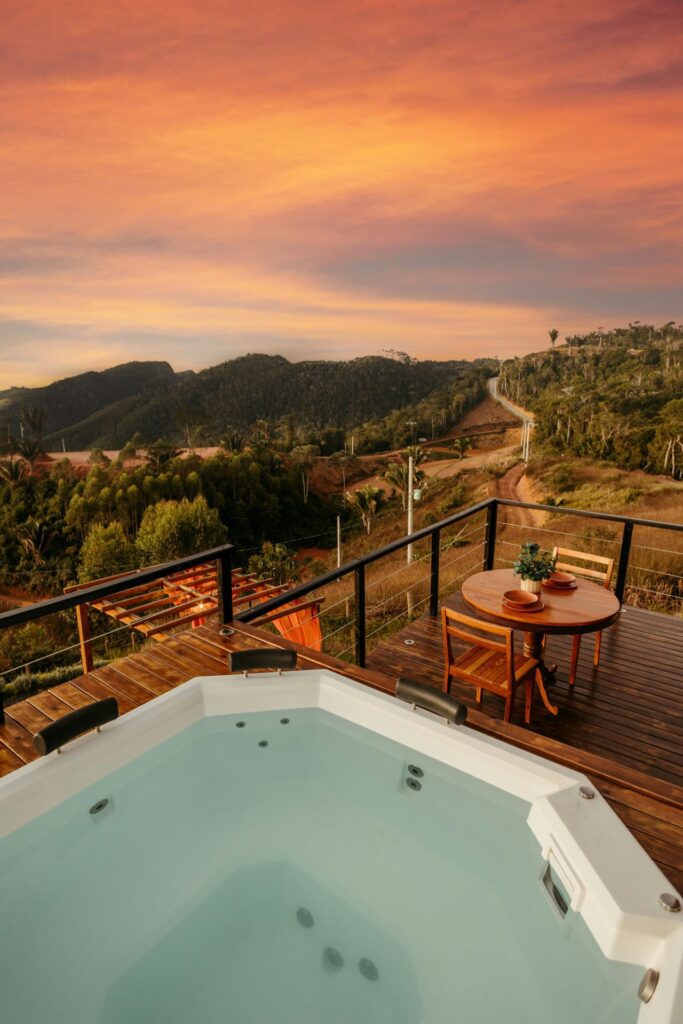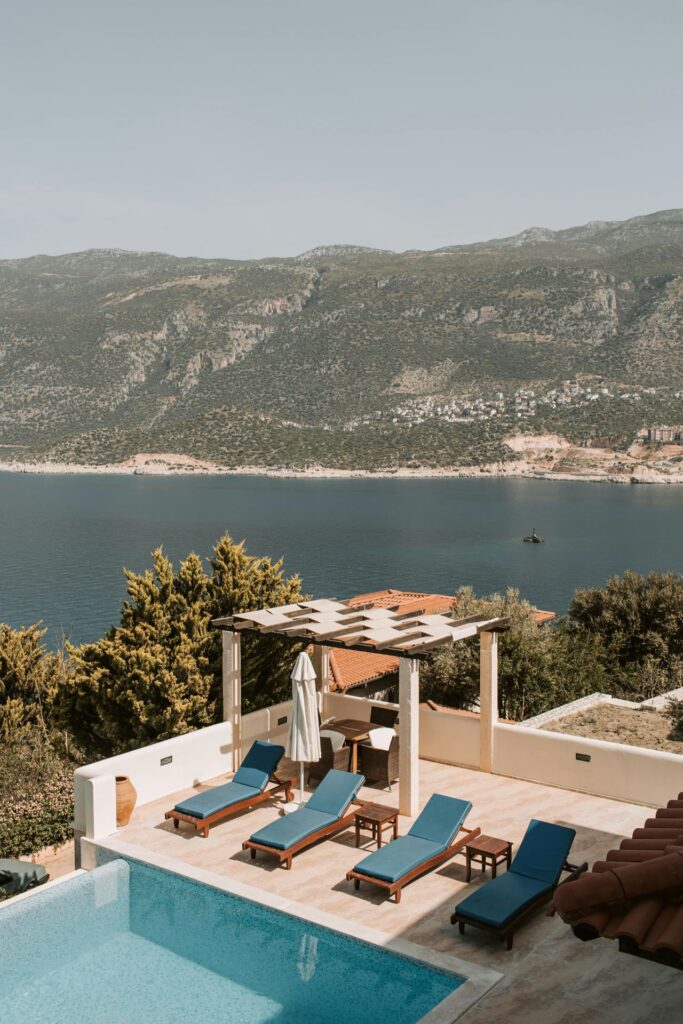Building a property near the water is an enticing venture, especially in a tropical paradise like Koh Samui. Imagine waking up to breathtaking ocean views and the soothing sound of waves gently crashing against the shore—there’s truly nothing like it. However, while the allure of beachfront living is undeniable, constructing properties in such idyllic settings comes with a unique set of challenges that demand careful planning and consideration.
From understanding the coastal environment and addressing erosion concerns to navigating local environmental regulations, the path to creating your dream beachfront home can be complex. This article will delve into the specific considerations for building near the water in Koh Samui, highlighting the potential obstacles developers and homeowners may face, along with practical solutions to overcome them. By being well-informed and prepared, you can ensure that your beachfront property not only offers stunning views but also stands the test of time against the elements.
Understanding the Coastal Environment
The coastal environment of Koh Samui is characterized by its stunning beaches, vibrant marine life, and lush tropical landscapes. This picturesque setting not only provides a serene backdrop for living but also supports a diverse ecosystem that is vital for the island’s ecological health. However, these beautiful surroundings come with specific challenges that must be addressed during the construction process. Understanding the coastal environment is crucial for any construction project, as it helps ensure that development is sustainable and minimally disruptive to the local ecosystem.
Erosion and Sedimentation
One of the most significant challenges of beachfront construction is erosion. Coastal erosion can lead to the gradual loss of land, threatening the stability of the foundation and structure of properties built near the shore. This natural process is often exacerbated by human activities and climate change, which can accelerate land loss and increase vulnerability to storms and flooding.
Sedimentation also plays a critical role in beachfront development. When sediment is displaced during construction, it can affect drainage and water management systems, leading to potential flooding and water quality issues. Poor sediment control can result in significant environmental degradation, impacting not only the construction site but also the surrounding marine ecosystems.
To combat these challenges, developers need to implement effective erosion control methods, such as retaining walls, strategic vegetation planting, and the use of geotextiles. Retaining walls can provide immediate structural support and prevent land loss, while vegetation helps stabilize the soil and promotes natural drainage. Geotextiles are particularly useful for reinforcing shorelines and preventing erosion while allowing water to flow through, thus protecting the integrity of the beachfront property.
By implementing these measures, developers can mitigate the effects of erosion and ensure the long-term sustainability of the beachfront property. This proactive approach not only safeguards the physical structure but also contributes to the ecological preservation of Koh Samui’s stunning coastal environment.
Environmental Regulations
When constructing near the water, adhering to local environmental regulations is essential. Koh Samui has specific laws and guidelines designed to protect its coastal ecosystems, including vital habitats for marine life and coral reefs. Developers must navigate these regulations to ensure that their construction projects comply with legal requirements and contribute positively to the local environment.
Conducting thorough environmental impact assessments is a crucial step in the development process. These assessments aim to identify potential effects on the surrounding ecosystem and provide insights into how construction activities may influence local wildlife, water quality, and natural habitats. By evaluating these factors, developers can make informed decisions that prioritize sustainability and ecological health.
Moreover, understanding and respecting these regulations is vital for responsible construction practices that preserve the natural beauty of Koh Samui. Developers who prioritize compliance not only demonstrate their commitment to environmental stewardship but also enhance their project’s reputation among potential buyers who increasingly value sustainability. By fostering a harmonious relationship between construction and the coastal environment, we can ensure that Koh Samui remains a cherished destination for generations to come.

Structural Considerations
Building near the water requires careful consideration of structural integrity. The unique challenges presented by the coastal environment necessitate specific design features to ensure safety and durability. When constructing beachfront properties, it is essential to address factors such as flood resilience, soil stability, and foundation design to create structures that can withstand the elements while providing a safe and comfortable living environment.
Flood and Storm Resilience
Properties located near the beach are particularly vulnerable to flooding and storm surges. Heavy rains, high tides, and tropical storms can pose significant risks to beachfront constructions, leading to costly damage and safety hazards. Therefore, it is crucial to design buildings that can withstand these natural forces.
To mitigate flood risks, developers should consider elevating structures above the base flood elevation. Elevated foundations not only minimize the likelihood of water intrusion but also enhance the overall resilience of the building. Incorporating materials that are resistant to moisture and corrosion is equally important, as beachfront properties are often exposed to harsh saltwater environments that can degrade traditional construction materials over time.
Building codes in coastal areas frequently mandate specific design features to enhance flood resilience. These may include elevated foundations, reinforced structures, and proper drainage systems that channel excess water away from the property. Additionally, developers should integrate flood-resistant technologies, such as breakaway walls, which can reduce the impact of storm surges without compromising the structural integrity of the home.
Soil Stability and Foundation Design
The type of soil at beachfront locations can vary significantly, affecting the stability of the foundation. Understanding soil characteristics is crucial in construction, as unstable soil can lead to settling or shifting, compromising the integrity of the building.
Conducting a thorough geotechnical investigation is essential to assess the soil’s characteristics and determine the appropriate foundation design. This investigation should include tests to evaluate soil composition, compaction, drainage, and load-bearing capacity. By identifying potential challenges early in the planning process, engineers can develop a suitable foundation plan that ensures the structure remains stable over time.
Common foundation designs for beachfront properties may include pier foundations, which elevate the structure above potential flood levels, and mat foundations, which distribute the building’s weight evenly across unstable soil. Understanding the local geological conditions and adhering to recommended foundation practices will help ensure long-lasting durability and safety for beachfront constructions in Koh Samui.
In conclusion, addressing structural considerations is vital when building near the water in Koh Samui. By focusing on flood and storm resilience as well as soil stability and foundation design, developers can create safe, durable, and attractive beachfront properties that can withstand the challenges posed by the coastal environment.

Environmental Impact
Constructing a beachfront property inevitably impacts the surrounding environment. It is essential to consider these effects to minimize harm and promote sustainability throughout the construction process. Responsible developers recognize the importance of balancing development needs with ecological preservation, ensuring that the beauty of Koh Samui’s coastal landscapes is maintained for future generations.
H3: Protecting Marine Ecosystems
The construction process can disturb local marine ecosystems, including coral reefs and fish habitats. These ecosystems are vital not only for marine biodiversity but also for the health of the coastal environment. Developers must implement effective measures to protect these valuable resources, ensuring that construction activities do not negatively impact marine life.
One effective strategy is the use of silt curtains during construction. These barriers help minimize sediment runoff into the ocean, protecting fragile ecosystems from harmful disturbances caused by construction activities. By containing sediments and preventing them from entering the water, developers can significantly reduce the risk of smothering coral reefs and harming aquatic species.
Additionally, integrating environmentally friendly practices is crucial. This includes using sustainable materials that minimize environmental impact and adopting construction methods that reduce noise pollution, which can disrupt local wildlife. Incorporating native vegetation into landscaping plans can also enhance habitat restoration efforts, providing essential shelter and food for local fauna. By prioritizing the protection of marine ecosystems, developers can contribute to the overall health and sustainability of Koh Samui’s coastal environment.

Sustainable Construction Practices
Sustainability should be a guiding principle in beachfront construction. By incorporating sustainable construction practices, developers can minimize their environmental footprint and promote long-term ecological health. This approach not only benefits the environment but also enhances the appeal of the property to environmentally conscious buyers.
Using renewable energy sources, such as solar panels, is a significant step towards sustainability. By harnessing solar energy, beachfront properties can reduce their reliance on non-renewable resources, leading to lower energy consumption and reduced greenhouse gas emissions. Additionally, employing green building materials—such as recycled, reclaimed, or rapidly renewable resources—further contributes to reducing the overall environmental impact of the construction process.
Moreover, creating landscaping that promotes local flora and fauna can enhance the ecological balance of the area. Developers can design outdoor spaces that incorporate native plants, which require less water and maintenance while providing essential habitat for local wildlife. Implementing rain gardens and permeable paving can help manage stormwater runoff, reducing erosion and improving water quality in nearby marine environments.
In summary, understanding and addressing the environmental impact of beachfront construction is essential for responsible development in Koh Samui. By protecting marine ecosystems and adopting sustainable construction practices, developers can contribute positively to the coastal environment while creating beautiful, functional properties that align with the values of modern, eco-conscious living.
Navigating Local Regulations and Permits
Building in Koh Samui involves navigating a complex landscape of local regulations and permits. Understanding these requirements is crucial for a successful construction project, as they dictate how and where properties can be developed while ensuring compliance with local planning objectives. Proper navigation of these regulations helps avoid costly delays and legal complications that can arise from non-compliance.
Obtaining Necessary Permits
Before commencing construction, developers must secure the necessary permits from local authorities. This process may involve submitting detailed plans, conducting environmental assessments, and demonstrating compliance with zoning regulations. Each permit application must be thoroughly prepared and tailored to meet the specific requirements set forth by local governments.
Working with local experts, such as architects and property consultants, who understand the permitting process can significantly streamline this aspect of construction. Their knowledge of the local regulatory landscape ensures that all legal requirements are met efficiently. For instance, they can assist in gathering the necessary documentation, conducting assessments, and preparing for any public hearings that may be required.
Failing to obtain the proper permits can result in significant consequences, including costly delays, fines, and even the halting of construction. In some cases, developers may be required to modify their plans or reapply for permits if they do not comply with local regulations. Therefore, investing time and resources into understanding and fulfilling these requirements is essential for a successful beachfront construction project in Koh Samui.
Zoning and Land Use Regulations
Koh Samui has specific zoning and land use regulations that dictate how beachfront properties can be developed. These regulations may restrict the height, size, and use of buildings in coastal areas to preserve the natural beauty of the landscape and protect local ecosystems. Understanding these zoning laws is crucial for developers to ensure that their projects align with local planning objectives.
For example, certain areas may be designated for residential, commercial, or mixed-use development, each with its own set of guidelines. Additionally, regulations may specify setbacks from the shoreline, ensuring that buildings are constructed at safe distances from the water to mitigate the impacts of flooding and erosion.
Developers should familiarize themselves with these zoning laws to avoid conflicts with local authorities and ensure that their projects adhere to community standards. Consulting with local planners or legal experts can provide valuable insights into navigating the zoning process, enabling developers to make informed decisions that enhance the likelihood of approval for their projects.
In summary, successfully navigating local regulations and permits is essential for beachfront construction in Koh Samui. By understanding the requirements for obtaining necessary permits and familiarizing themselves with zoning and land use regulations, developers can ensure that their projects are compliant, sustainable, and aligned with the vision for the island’s future development.

Connecting Heveatecture to Your Beachfront Construction Journey
At Heveatecture, we understand that building a beachfront property in Koh Samui is not just a construction project; it’s a transformative journey that involves realizing your dream of coastal living. Our mission is to guide you through every step of this process, ensuring that your vision aligns seamlessly with the unique challenges and considerations of constructing near the water.
Expertise in Coastal Construction
With our extensive experience in the region, Heveatecture offers invaluable insights into the coastal environment of Koh Samui. We recognize the importance of addressing challenges such as erosion, flood resilience, and soil stability from the outset. Our team of experts is well-versed in the specific design features required to ensure the safety and durability of your property. By incorporating sustainable practices and using materials that withstand the harsh coastal elements, we help create a home that is both beautiful and resilient.
Commitment to Sustainable Development
Sustainability is at the core of Heveatecture’s philosophy. We believe that every beachfront construction project should prioritize the preservation of the environment. By working with us, you can rest assured that your project will include measures to protect local marine ecosystems and adhere to environmental regulations. We conduct thorough environmental impact assessments to ensure that your construction activities align with local laws while promoting ecological health.
Our commitment to sustainability extends to the materials we recommend and the practices we implement. We help you explore options for renewable energy sources, such as solar panels, and sustainable building materials that not only enhance the aesthetics of your home but also reduce its environmental footprint.
Navigating Local Regulations
Understanding local regulations can be daunting, but Heveatecture is here to simplify that process for you. Our knowledgeable team is familiar with the permitting requirements and zoning regulations that govern beachfront construction in Koh Samui. We guide you through obtaining the necessary permits, ensuring that your project complies with all local laws and standards. This expertise allows you to focus on your vision while we handle the complexities of the regulatory landscape.
Conclusion
Building a beachfront property in Koh Samui is a rewarding endeavor, offering breathtaking views and the unique charm of coastal living. The opportunity to wake up to the sound of waves and the beauty of the ocean right at your doorstep is truly enticing. However, this dream also presents a range of challenges that require careful consideration and planning.
From understanding the coastal environment and ensuring structural integrity to navigating local regulations and minimizing environmental impact, developers must approach beachfront construction with diligence and foresight. It is essential to address potential issues such as erosion, flooding, and the protection of marine ecosystems. By being proactive in these areas, developers can create properties that are not only stunning but also safe and sustainable.
Moreover, implementing sustainable practices is crucial for preserving the natural beauty of Koh Samui. By utilizing eco-friendly materials, renewable energy sources, and innovative design strategies, builders can minimize their environmental footprint while contributing positively to the local ecosystem. This commitment to sustainability ensures that the charm of Koh Samui is maintained for future generations.
Ultimately, with thoughtful planning and a dedication to responsible construction, your beachfront property can become a cherished haven in this tropical paradise. By embracing the unique challenges of building near the water, you can create a lasting legacy that harmonizes with the natural surroundings and enhances the vibrant community of Koh Samui.
FAQs
Building a beachfront property in Koh Samui presents several unique challenges. The main challenges include erosion, which threatens the land’s stability; compliance with environmental regulations aimed at protecting local ecosystems; ensuring flood resilience to withstand heavy rains and storm surges; and addressing soil stability, which can significantly affect the foundation of the structure. Each of these factors requires careful consideration during the planning and construction phases to ensure a successful project.
Protecting your beachfront property from erosion involves implementing effective erosion control methods. Techniques such as building retaining walls can help stabilize the shoreline, while planting vegetation along the coast can further enhance soil retention and reduce the impact of waves. Other methods include using geotextiles to reinforce the soil and create a barrier against water flow, thus minimizing erosion risks over time.
When constructing near the water in Koh Samui, it’s essential to adhere to local environmental regulations designed to protect marine ecosystems. These regulations may require developers to conduct environmental impact assessments to evaluate how the construction will affect local wildlife, water quality, and natural habitats. Understanding these regulations is crucial for ensuring compliance and maintaining the ecological integrity of the coastal area.
To ensure your beachfront home is resilient to flooding, it’s important to elevate the structure above the base flood elevation. This can be achieved through the use of raised foundations or pilings. Additionally, incorporating moisture-resistant materials in construction—such as treated wood and water-resistant finishes—will enhance the building’s ability to withstand flooding and minimize water damage.
The best foundation for beachfront construction is one that is designed based on a thorough geotechnical investigation. This investigation assesses the soil composition, drainage characteristics, and load-bearing capacity, allowing engineers to recommend the most suitable foundation type. Options may include pier foundations that elevate the structure or mat foundations that distribute weight evenly across unstable soil, ensuring stability and durability in a coastal environment.
Minimizing the environmental impact of your construction project involves several strategies. Utilizing sustainable materials, such as recycled or eco-friendly products, can significantly reduce your project’s carbon footprint. Additionally, implementing measures to protect local marine ecosystems—like using silt curtains to minimize sediment runoff—and incorporating renewable energy sources, such as solar panels, can further enhance sustainability while contributing positively to the environment.
For beachfront construction in Koh Samui, you will need to secure various local permits before starting your project. This typically includes construction permits, environmental permits, and potentially zoning permits depending on the specifics of your development. Working with local authorities and professionals who understand the permitting process can help ensure that you gather all necessary documentation and comply with local regulations.
Zoning regulations in Koh Samui dictate how beachfront properties can be developed, including restrictions on the height, size, and intended use of buildings in coastal areas. Familiarizing yourself with these regulations is crucial to ensure your project aligns with local planning objectives and avoids conflicts with authorities. Understanding zoning laws can also guide your design decisions and help you maximize your property’s potential.
Soil stability is a critical factor in construction, particularly for beachfront properties. Unstable soil can lead to settling or shifting, compromising the integrity of the building and potentially causing structural failures. Therefore, conducting a thorough geotechnical investigation is essential to assess the soil’s characteristics and determine the appropriate foundation design, ensuring that the structure remains stable over time.
Incorporating sustainable practices in beachfront construction is vital for minimizing environmental impact. Developers can implement renewable energy systems, such as solar panels, to reduce energy consumption. Using eco-friendly materials and promoting landscaping that supports local flora and fauna can enhance the ecological balance of the area. Additionally, adopting water conservation techniques and designing for natural ventilation can further promote sustainability in coastal living.
